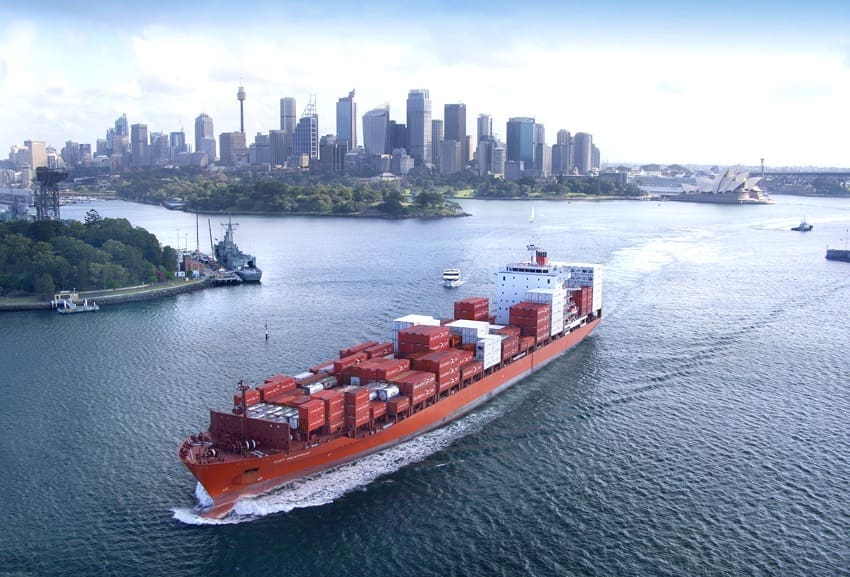
AUSTRALIA’S 2023 calendar year beef exports hit their highest level in five years last year, with shipments to more than 50 destinations reaching just over 1.08 million tonnes.
Data released by the Department of Agriculture this morning shows exports of beef and veal at 1,082,405 tonnes, the biggest volume seen since 2019, when drought-fuelled cattle turnoff saw shipments soar to a record 1.22 million tonnes.
Last year’s result was up more than 227,000t or 27pc on the previous 2022 year – which hit a 19-year low – and 65,000t or 6pc higher than the five-year average for 2019-2023 (1.018mt).
December monthly exports out of Australia are typically low, due to holiday-shortened production, but the fourth quarter surge in beef production seen last year across eastern Australia helped finish the season on a high note. Total exports last month reached more than 106,000t, compared with just 76,000t for December a year earlier.
Almost all export customer countries took more Australian beef last year, in part due to declining volumes in the back half of the year from other key beef exporters like the United States.
The US re-asserted itself as Australia’s largest beef export customer by volume, accounting for just over 246,000t of chilled and frozen Australian beef last year.
That followed two very quiet years, where US domestic beef production boomed due to the country’s own herd liquidation as a result of drought.
Last year’s trade to the US represented a dramatic 84pc rise from total shipments of 133,925t the year before. Exports to the US accounted for 23pc of all Australian exports last year.
The new 2024 year is shaping to be another growth year for Australian beef exports to the US, as the country reduces its own domestic slaughter due to herd rebuilding.
While competing exports out of South America to the US continue to grow, the ‘Other Country’ quota (just 65,000t) under which Brazil exports beef to the US is already 39pc allocated for 2024, meaning Brazil will have to pay full tariff of 26.4pc after the volume is exhausted. Last year, that happened in early May, while in 2022, the quota was filled in late March.
Australia operates under its own individual US quota – this year sitting at 448,000t –meaning it is unlikely to face a quota-based tariff into the US any time soon.
Japan just edged out China for second place among Australian export customers on a volume basis last year, but in value terms, Japan’s demand for chilled and grainfed beef meant it was far higher.
All exports to Japan last year reached 206,802t, down 3.7pc on the previous year. Again, displacement of declining US exports could see Japan expand as a customer in 2024.
China accounted for 206,191t of Australian beef last calendar year, a dramatic 30pc or 48,000t increase on the previous year, as China continues to recover from the COVID era. Last year was still well short of Australia’s record shipments to China made in 2019, when the market accepted more than 300,000t of Australian beef.
Since then, Chinese purchasing has swung more heavily to cheaper sources out of South America. Australia now accounts for only around 7pc of all of China’s imported beef needs.
About 82pc of all Australian exports to China last year were in frozen form.
South Korea continued to function as one of Australia’s most consistent and dependable export markets, taking 188,923t of beef and veal last year, up 28,000t or 17pc on the previous year.
Trade into many second-tier and emerging markets also showed a marked uptick in 2023.
Near-neighbour Indonesia accounted for 68,387t of Australian beef last year, mostly frozen. That was up 29,000t or 73pc on trade seen in the 2022 calendar year, partly due to declines in live export.
Taiwan and the Philippines continue to lend solid buying support out of Asia, taking 26,049t and 20.123t respectively.
The seven countries comprising the Middle East region last year accepted 28,977t of Australian beef, up about 4pc from the previous year. The price-conscious Middle East region continues to accept growing quantities of beef out of South America, in preference to Australia.
Canada continues to be a surprise packet among export customers, taking 21,583t of Australian beef last year, partly due to drought impacts in North America. Volume was roughly double that seen the year before.
Easily the biggest disappointment among export customers last year was the performance of the United Kingdom market, following activation of the new Australia-UK Free Trade Agreement on 1 June.
Far from the ‘avalanche’ of Australian beef as predicted by UK farmers opposed to the trade deal, total Australian exports last year reached just 2406t, ranking the UK number 19 on Australia’s export customer base, well behind Papua New Guinea and the Pacific Islands.
In the absence of any progress in an FTA deal, the surrounding European Union countries took just 8547t of Australian beef, up about 1500t or 12pc on the previous year.



HAVE YOUR SAY